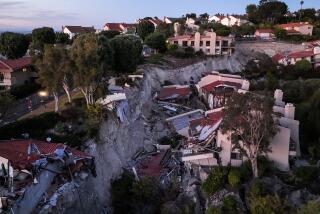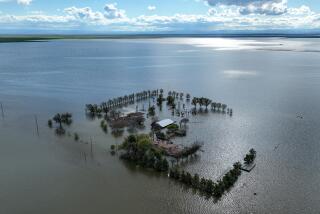Gigantic earthquakes trigger volcanic eruptions ... or not
A massive earthquake rattles a town, triggering fiery eruptions in nearby volcanoes.
It sounds like the plot of a disaster movie, but it has actually happened: Journeying in Chile when an 8.5 magnitude temblor struck in 1835, Charles Darwin reported that at least three volcanoes there erupted in the aftermath of the quake. Eruptions also followed earthquakes in Chile in 1906 and 1960, and in Hawaii in 1975.
So when two really, really big quakes occurred in the last three years -- the 8.8 Maule quake in Chile in 2010, and the 9.0 Tohoku quake in Japan, in 2011 -- scientists who study the interactions between quakes and eruptions thought they might get some new volcanic fireworks to study.
“What was interesting was, there were none,” said Matthew Pritchard, a professor of earth and atmospheric science at Cornell University in Ithaca, N.Y., and author of one of two papers that say the large quakes failed to generate volcanic eruptions -- instead causing nearby volcanoes to sink. Both papers were published online Sunday by the journal Nature Geoscience.
Using satellite radar readings and other measurements to study deformation of the ground near the big earthquakes, Pritchard’s team (which was studying the Chile quake) and the Japanese team of Youchiro Takada and Yo Fukushima, of Kyoto University (which looked at the Tohoku event) both found that volcanoes near the quakes’ epicenters actually sank, rather than rose, in the aftermath of the temblors.
“We expected to see uplift, where magma would be percolating from the ground, leading up to an eruption,” Pritchard said. “We were scratching our heads, and we still are.”
Pritchard’s group reported in one of the Nature Geoscience papers that five volcanoes near the Chile quake subsided by up to 6 inches, while some 20 other volcanoes nearby remained unaffected. (Click on the photo at top to view a gallery of some of the volcanoes they studied, as well as maps incorporating the radar data.) Takada and Fukushima also observed five subsiding volcanoes, which sank between 2 to 6 inches.
The two groups offered different explanations for what they saw. The Japanese scientists attributed it to the earthquake altering the shapes of the magma chambers beneath the volcanoes; Pritchard’s group hypothesized that the sinking resulted from earthquake-related changes in the way water near the volcanoes flowed.
Pritchard said future research would focus on understanding exactly why volcanoes weren’t triggered after the two massive quakes, and whether the ground deformation the two teams observed had anything to do with it.
The sinking “might have indicated something happening that released the valve, so pressure didn’t build up and release the eruption,” he said. But he also said that scientists would need to study more links between earthquakes and eruptions to really understand what had happened.
He said prime locations to study would include Chile and Alaska. Researchers also noticed similar sinking at Long Valley Caldera near California’s Mammoth Mountain, after the Landers quake in 1992 and after the Hector Mines quake in 1999, he said.
For more on the earthquakes-and-volcanoes papers, Nature Geoscience has a News and Views piece about both research papers (subscription required for full text).







